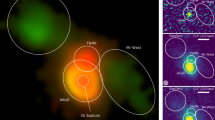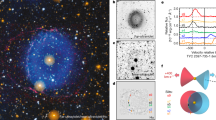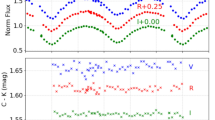Abstract
THIS comet, C 1881, was well seen here on the night of Sunday last, the 21st instant. At 9.30, the night being clear, it was at once detected with the naked eye at a point in the northwest, where lines drawn downward through and of Ursa Major (the pointers) and γ and δ of the same constellation would intersect, and just above ψ of Ursa Major, a star of the 3rd magnitude. Owing to the comet's close proximity to the horizon I could not use the 6″ equatorial, but the position must have been very close upon R.A. 11h. and D.N. 47°. The general appearance to the eye was that of a comet with two nuclei, the one in advance of the other. With a 2¼-inch binocular the comet was beautifully sharp and well defined, more so, I thought, than the great southern one when in the same position. The nucleus and star appeared of about the same intensity, but the yellow tint of the latter was strongly contrasted with the almost intense gas blue tint of the former. The tail was well defined, only slightly spreading, and nearly straight, stretching in a line a little to the left of β of Ursa Major, nearly as far as a small triangular group of stars just under β, marked in Maltby's atlas as 44.37 and 246.7. This would give a length of from seven to eight degrees. The tail did not, with the small instrumental power I was using, appear to have any central deficiency of light. The sharpness and brightness of the comet's appearance, as contrasted with the more diffused aspect of the one which has just disappeared, has been remarked upon by several observers.
Similar content being viewed by others
Article PDF
Author information
Authors and Affiliations
Rights and permissions
About this article
Cite this article
CAPRON, J. Schaeberle's Comet. Nature 24, 380 (1881). https://doi.org/10.1038/024380a0
Issue date:
DOI: https://doi.org/10.1038/024380a0



